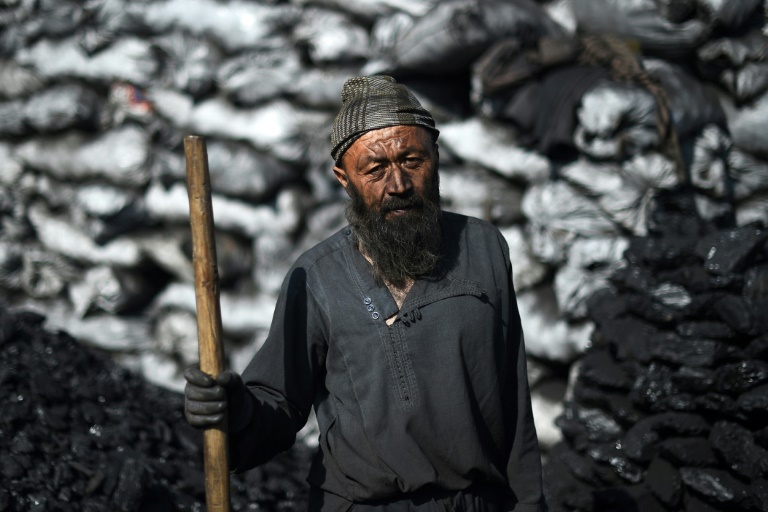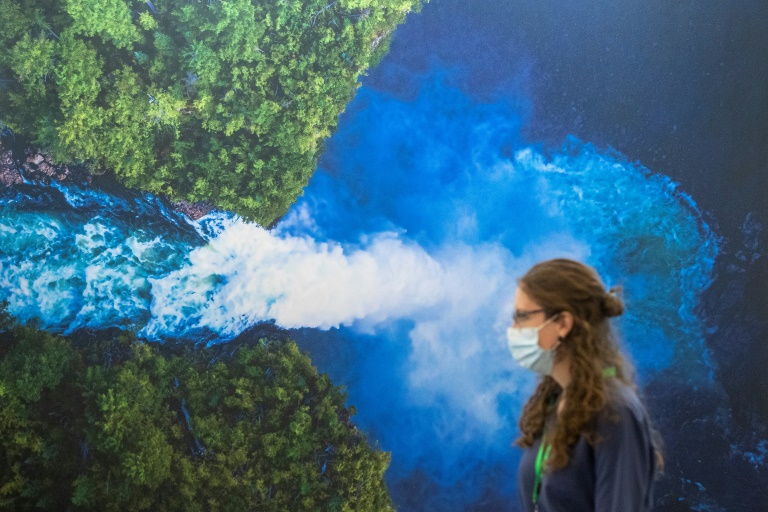At a Kabul market, coal is arriving by the tonne as the winter cold sets in.
Even as prices rise, Afghans have few options but to burn it for heat, creating some of the world’s most dangerous air.
“Pollution causes serious respiratory diseases … All Afghans know what coal does,” customer Amanullah Daudzai, dressed in a traditional beige shalwar kameez, tells AFP.
More than three months after the Taliban drove the Western-backed government out of the country, Afghanistan’s economy is facing collapse.
In such desperate conditions, Daudzai says coal is still cheaper than the alternatives.
“If we had electricity and gas, people wouldn’t use coal,” says one of the market traders, Abdullah Rahimi.
None of Rahimi’s 40 or so employees seems to have escaped the black dust that has crept deep into the wrinkles of the older workers.
It is already well established under the nails of the younger staff, and is probably inside their bronchial tubes as well, though some are not yet 15 years old.
They throw blocks of coal to each other, push wheelbarrows loaded with bags, make piles with shovels, and load customers’ vehicles.
– ‘Hotter and hotter’ –
It is a long way from this month’s COP 26 climate summit in Glasgow, Scotland, where nearly 200 nations signed a deal to try to halt runaway global warming, naming coal use among the main culprits.
Afghanistan, one of the world’s poorest countries, remains a relatively modest polluter.
In 2018, the average Afghan caused 0.2 tonnes of CO2 emissions, compared with about 15 from the average American, World Bank figures show.
Nevertheless, Kabul is often ranked in the top 10 worst cities for pollution globally.
Every winter the air in the capital, located at an altitude of 1,800 metres (5,900 feet), becomes toxic, filled with smoke from domestic heaters burning coal, wood and any other waste that can be burned, from household garbage to car tyres.
From the surrounding mountains, the thick cloud of smog that covers the basin where at least five million people live can clearly be seen.
“Global warming is a problem for the whole world. We are aware of it here,” says Daudzai.
“It’s getting hotter and hotter, we don’t get snow every winter like we used to.”
– Buying coal to survive –
Plagued by decades of war, and still reeling from the consequences of the Taliban takeover in August, the environment is rarely a priority for Afghans.
International aid has dried up and the economy has come to a standstill, while climate change-related drought is spreading hunger.
Coal prices have risen by nine percent in the past year, partly because of more expensive transport.
“Before, we used to sell one or two truckloads a day. Now we need 15 or 20 days,” says the trader Rahimi.
Mohammad Yusuf Mangal, a 21-year-old real estate agent, has just negotiated to buy five tonnes. He will need six more to keep himself warm all winter.
Business is suffering, but “we have to buy coal to survive” the winter, he says.
At another market, Sharifa Atayee, a 38-year-old widow with five children who had come to ask about prices, gives up.
“It’s too expensive this year,” she says.
She does not know when she will be able to buy more. She used to work in the police force, but has been unemployed since the arrival of the Taliban.
Now without a salary, she has sold all her gold and jewellery, but it is not enough.










